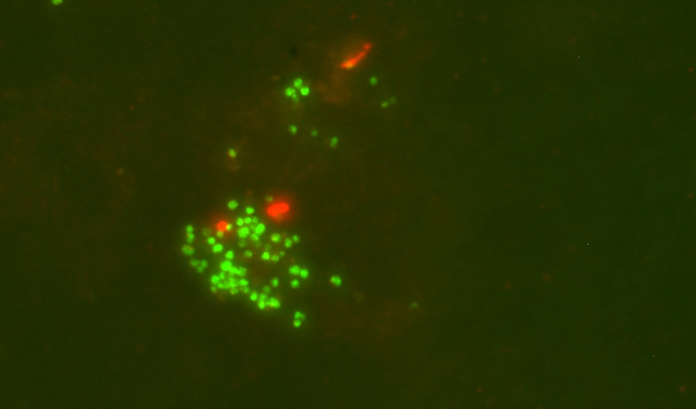Oil hydrocarbons can be converted into methane through the process of methanogenic degradation which is typically orchestrated by a partnership of multiple microbes—both bacteria and methanogenic archaea. It has been suggested that the archaeon Candidatus Methanoliparum can do it alone by combining the degradation of long-chain alkanes with methanogenesis. Now, researchers have cultivated the archaeon in the lab—for the first time—from a settling tank of an oil production facility.
This work is published in Nature, in the paper, “Non-syntrophic methanogenic hydrocarbon degradation by an archaeal species.”
“Methanoliparia is a kind of hybrid creature that combines the properties of an oil degrader with those of a methanogen, i.e., a methane producer,” explained study author Gunter Wegener, PhD, scientist at the Max Planck Institute for Marine Microbiology and the MARUM—Center for Marine Environmental Sciences at the University of Bremen.
Because the researchers succeeded in cultivating these microorganisms in the laboratory, they were able to investigate the underlying processes in detail. This “miracle microbe” contains and overexpresses genes encoding alkyl-coenzyme M reductases and methyl-coenzyme M reductases—genes for archaeal multicarbon alkane and methane metabolism. As a result, it breaks down oil into methane (CH4) and carbon dioxide (CO2).
“In its genes, it carries the blueprints for enzymes that can activate and decompose various hydrocarbons. In addition, it also has the complete gear kit of a methane producer,” said Wegener.
The researchers incubated the microbes with various food sources. They wrote, “Incubation experiments with different substrates and mass spectrometric detection of coenzyme-M-bound intermediates confirm that Ca. Methanoliparum thrives not only on a variety of long-chain alkanes, but also on n-alkylcyclohexanes and n-alkylbenzenes with long n-alkyl (C≥13) moieties. By contrast, short-chain alkanes (such as ethane to octane) or aromatics with short alkyl chains (C≤12) were not consumed.”
A particularly surprising result was that this archaeon activated all the different hydrocarbons with the same enzyme. “So far, we have only cultivated archaea that live on short-chain hydrocarbons such as ethane or butane. Methanoliparia, on the other hand, prefers heavy oil with its long-chain compounds,” said Rafael Laso-Pérez, PhD, who is currently a postdoctoral researcher at National Center for Biotechnology-CSIC, in Madrid, Spain.
“Methanogenic microbes that use long-chain hydrocarbons directly—we didn’t know these existed until now,” Laso-Pérez stated. “Even complicated hydrocarbons with ring-like or aromatic structures are not too bulky for Methanoliparia, at least if they are bound to at least one longer carbon chain. This means that besides our other exciting results we have also found a previously completely unknown pathway of methanogenesis.”
The Methanoliparia cells cultured for the present study originated from one of China’s largest oil fields, the Shengli oil field. However, genetic analyses show that these microbes are distributed all over the world. “Our results hold an entirely new understanding of oil exploitation in subsurface oil reservoirs. Both the wide distribution of these organisms and the potential industrial applications make this an exciting field of research in the coming years,” Wegener concluded.

